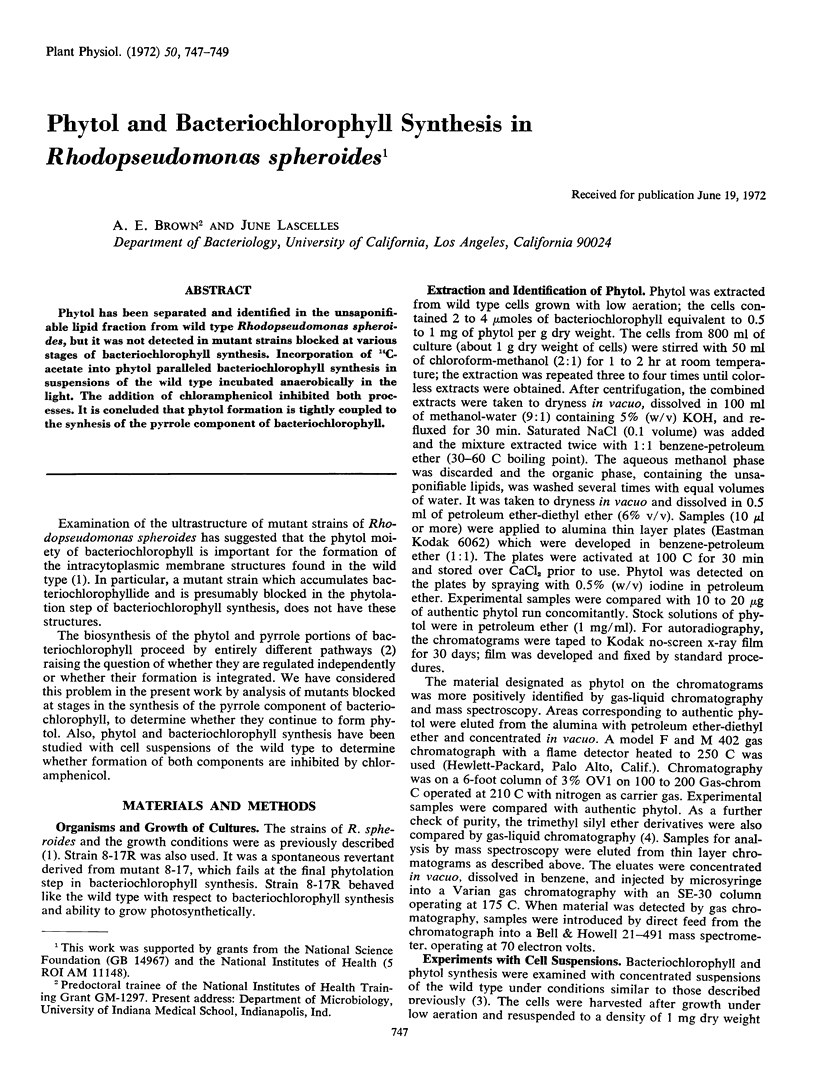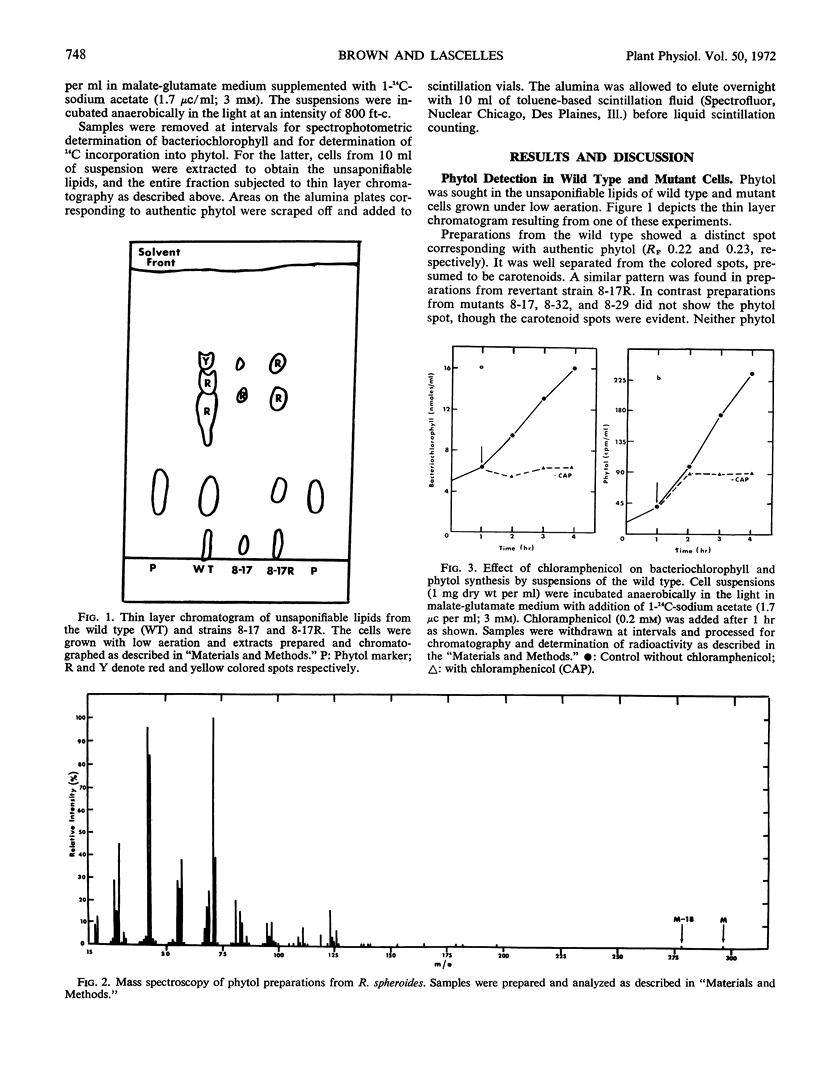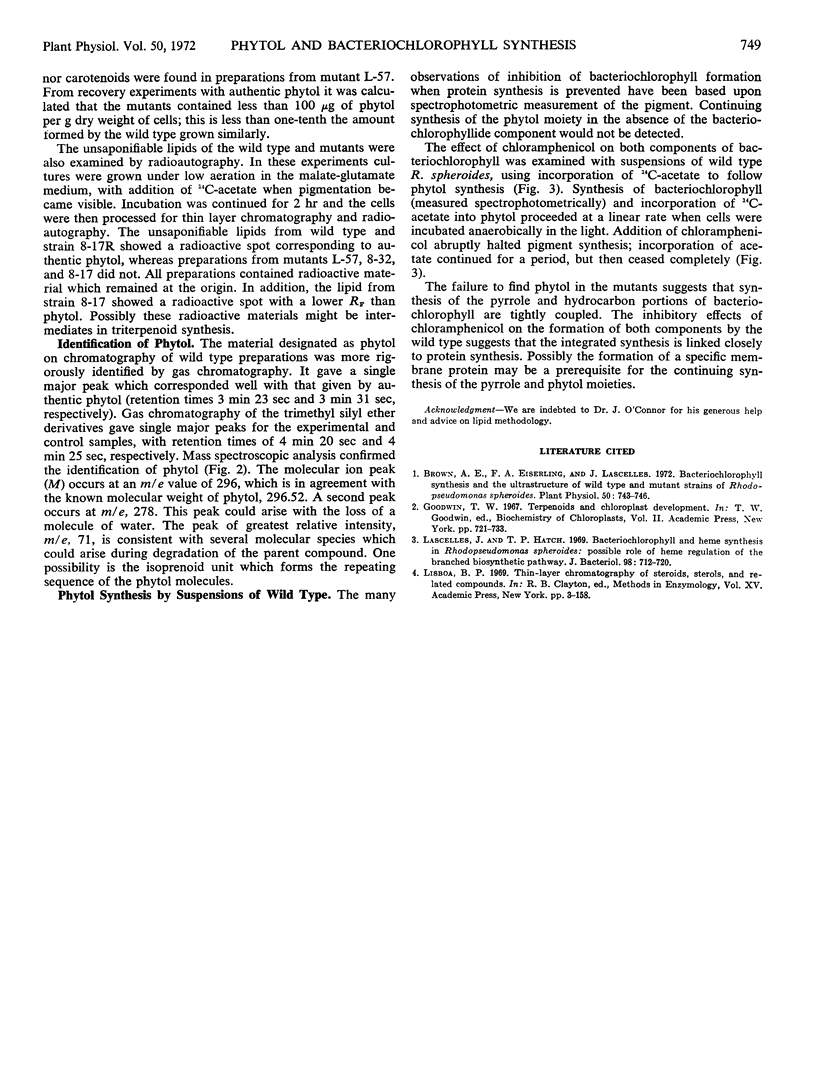Abstract
Phytol has been separated and identified in the unsaponifiable lipid fraction from wild type Rhodopseudomonas spheroides, but it was not detected in mutant strains blocked at various stages of bacteriochlorophyll synthesis. Incorporation of 14C-acetate into phytol paralleled bacteriochlorophyll synthesis in suspensions of the wild type incubated anaerobically in the light. The addition of chloramphenicol inhibited both processes. It is concluded that phytol formation is tightly coupled to the synthesis of the pyrrole component of bacteriochlorophyll.
Full text
PDF


Selected References
These references are in PubMed. This may not be the complete list of references from this article.
- Brown A. E., Eiserling F. A., Lascelles J. Bacteriochlorophyll Synthesis and the Ultrastructure of Wild Type and Mutant Strains of Rhodopseudomonas spheroides. Plant Physiol. 1972 Dec;50(6):743–746. doi: 10.1104/pp.50.6.743. [DOI] [PMC free article] [PubMed] [Google Scholar]
- Lascelles J., Hatch T. P. Bacteriochlorophyll and heme synthesis in Rhodopseudomonas spheroides: possible role of heme in regulation of the branched biosynthetic pathway. J Bacteriol. 1969 May;98(2):712–720. doi: 10.1128/jb.98.2.712-720.1969. [DOI] [PMC free article] [PubMed] [Google Scholar]


